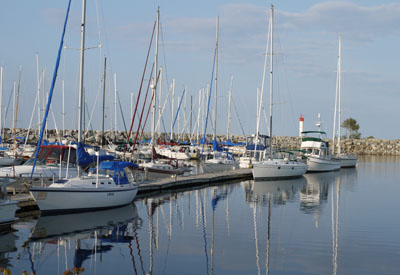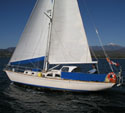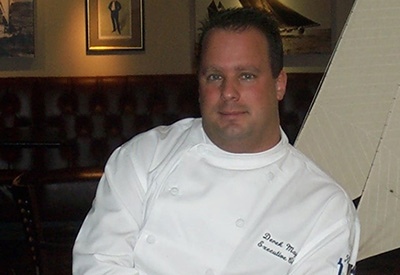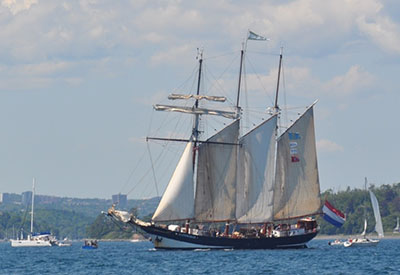Skinny Sailing
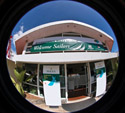
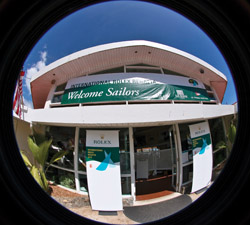 “IC24’s have a crew weight limit of 850 pounds and there are five of us,” said Tyler Rice, a high school senior from St. Thomas, USVI, and my skipper for the 2010 Rolex International Regatta during a pre-race phone call. “We did some math last night and we all need to loose some weight before weigh-in.”
“IC24’s have a crew weight limit of 850 pounds and there are five of us,” said Tyler Rice, a high school senior from St. Thomas, USVI, and my skipper for the 2010 Rolex International Regatta during a pre-race phone call. “We did some math last night and we all need to loose some weight before weigh-in.”
Thus began a time of thirst and hunger but the trade off was compelling: ten days of sacrifice for the serious fun of sailing in a legendary Caribbean event. Plus, an opportunity to race with dialed-in high-school seniors and the boat’s skilled and gracious owner, Mike Williams, ensured a good time. 2010 marked the 37th annual Rolex International Regatta at St. Thomas, with 66 boats racing in seven classes to compete for four Rolex timepieces. Walking into the clubhouse for weigh-in, I was impressed to see scores of volunteers diligently making last-minute preparations as warm breezes filled the open-air clubhouse.
Our moment of truth came as our last crewmember clocked in to give us a crew weight of 838 pounds—safe! Given that the forecast called for lighter-than-average winds, this felt like a good thing.
Twenty-four hours later, however, those twelve pounds were sorely missed as Red Dog, Williams’ IC 24—a modified J/24 that is the Caribbean’s most competitive class—bashes into 18 knots and steep, three-foot seas near the starting area. “There’s another drink you owe me, Tyler!” exclaims Olin Davis, our bowman, as an errant wave soaks the foredeck. While the water might be warm here, Davis and Max Nickbarg—our spinnaker trimmer—expect great results and a dry ride from their skipper.
Rice nails the pin-favored downwind start of the Town Race as Davis and Nickbarg pop the kite exactly on queue. We settle into the six-plus mile sleigh ride along the island’s southeast coastline to Charlotte Amalie as Nickbarg and Williams keep the sails powered up. Rice keeps the wind indicator pegged due astern as we surf down the stubby seas. Despite our efforts, we can’t shake the competition: The entire fleet is sprinting within a few boatlengths of each other, with minimal passing opportunities. Even as we enter our first mark rounding, miles later, there’s virtually no fleet separation.
The RC divides the first day into three longer races—the downhill sprint to Charlotte Amalie, followed by two upwind races back to the YC—each of which features unusual course shapes and uses the coastline and the surrounding smaller islands to add challenge and opportunity, especially on the close-winded legs.
“OK guys, we’re sailing windward-leewards today,” announces Rice as we sail to Great Bay, which is northeast of the YC, for the start of Day Two’s racing. “The race committee wants to get in eight races today.” The powerful Caribbean sun drums down on the racecourse, whose flat, island-protected seas are being combed by twelve-knot breezes. The starting line is short, and, as Rice executes a great boat-end start, I spot the windward mark, maybe a mile to weather. An offset leg, perhaps three boatlengths long, and a leeward gate are the only other course features. It’s obvious that while yesterday’s racing was interesting and scenic, today is dedicated to thoroughly grilling each crew. Here, one tactical error, a bungled maneuver or a missed shift tests preparation and concentration: serious inter-island sailing talent populates this fleet and recoveries are virtually nonexistent. We return to the dock that evening exhausted and sun-baked.
By Day Three, sunburns and chapped lips are taxing the sixty-five odd IC24 sailors as we amble over to Nazareth Bay and the start of Race One. The RC wastes no time in commencing the starting line samba. We’re soon rifling through beats, sets and drops in an animated blur of staccato-style sprints, this time on a racecourse that’s punctuated by slappy seas and land-influenced shifts. The biggest challenge—besides staving off the fleet’s heavy hitters—is keeping pace with the RC’s schedule as energy and attention spans lapse. After seventeen IC24 races, there’s no doubt that Puerto Rico’s Fraito Lugo (Orion) earned his Rolex —which he gifted to his trimmer, Milton Gonzalesz—or that the RC gave sailors in all seven classes a full-value racing experience.
Staggering up the dock, wasted from weight loss, an overdose of Vitamin D, and so much sailing, I realize that it’s the mark of a great regatta when a cold beer, a comfortable chair and shade become life’s biggest desires. And perhaps a real meal…but only after reliving the weekend’s excitement with friends ashore.

